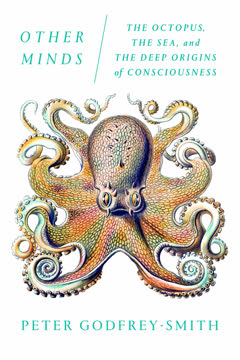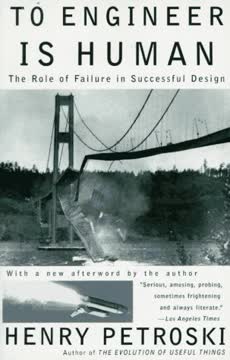نکات کلیدی
1. شکست، مادر موفقیت طراحی است
خواسته، نه نیاز، مادر اختراع است.
ناامیدی محرک نوآوری است. چیزها و ایدههای جدید از نارضایتی ما از وضعیت موجود به وجود میآیند. ناکامی آثار و فناوریهای موجود در برآورده کردن نیازها یا انتظارات ما، انگیزهای برای بهبود آنها ایجاد میکند. این نارضایتی، چه ناشی از یک قطعه خراب یا یک سیستم کند باشد، به کاتالیزوری برای نوآوری تبدیل میشود.
شناسایی علت. اولین گام به سوی یک راهحل، شناسایی علت اصلی شکست است. با درک اینکه چرا چیزی کار نمیکند، مخترعان، مهندسان و طراحان میتوانند تلاشهای خود را بر روی اجتناب، حذف یا دور زدن مشکل متمرکز کنند. این رویکرد هدفمند برای توسعه بهبودهای مؤثر ضروری است.
بهبود مستمر. حتی بهترین طراحیها نیز محدودیتهایی دارند و همیشه جایی برای بهبود وجود دارد. موفقترین پیشرفتها آنهایی هستند که به طور مستقیم به این محدودیتها میپردازند و بر روی شکستها تمرکز میکنند تا راهحلهای بهتری ایجاد کنند. این فرآیند تکراری شناسایی و غلبه بر شکستها، موتور پیشرفت فناوری است.
2. طراحی، رقص پارادوکسیکال موفقیت و شکست است
موفقیت و شکست در طراحی به هم پیوستهاند.
موفقیت، شکستهای بالقوه را پنهان میکند. در حالی که تمرکز بر شکست میتواند به موفقیت منجر شود، وابستگی بیش از حد به پیشینههای موفق میتواند به شکستهای آینده منجر شود. موفقیت صرفاً عدم وجود شکست نیست؛ بلکه میتواند شکستهای بالقوه را نیز پنهان کند. تقلید از موفقیت ممکن است در کوتاهمدت مؤثر باشد، اما چنین رفتاری میتواند به طرز شگفتانگیزی به خود شکست منجر شود.
موفقیتهای گذشته تضمینی نیستند. یک نوع سنگ که به طور معقولی به عنوان چکش برای هر کار شناخته شده قبلی عمل میکند، ممکن است به عنوان چکش-سنگ شناخته شود. با این حال، وظیفهای ممکن است پیش بیاید که در آن چکش-سنگ شکست بخورد. موفقیتهای گذشته، هرچقدر هم که زیاد و عمومی باشند، تضمینی برای عملکرد آینده در یک زمینه جدید نیستند.
پیشبینی شکست کلید است. این کتاب به بررسی تعامل بین موفقیت و شکست در طراحی میپردازد و به ویژه نقش مهم واکنش به شکست و پیشبینی آن در دستیابی به موفقیت را توصیف میکند. اکثریت قریب به اتفاق کاربران یک فناوری به محدودیتهای آن سازگار میشوند. اما در ذات انسان است که بخواهد از چیزها فراتر از دامنهی مورد نظرشان استفاده کند.
3. طراحیهای ملموس و ناملموس اصول یکسانی دارند
بیشتر چیزها بیش از یک هدف دارند که به وضوح طراحی و نحوهی شکست آنها را پیچیده میکند.
طراحی فراتر از اشیاء فیزیکی است. اصول طراحی و محدودیتهای آن نه تنها به اشیاء ملموس مانند پروژکتورها و نشانگرها بلکه به چیزهای ناملموس نیز اعمال میشود. این شامل ساختارهای فکری و نمادین مانند قانون اساسی ملی و پرچمها است، جایی که عدم پیشبینی اینکه چگونه چنین چیزهای سیاسی ممکن است نتوانند نظر گروههای مختلف را جلب کنند، میتواند فاجعهبار باشد.
بازیها به عنوان سیستمهای طراحی. استراتژیهای بازیهایی مانند بسکتبال، هرچند ممکن است از نظر سیاسی کمتر مهم باشند، نیز مسائلی از طراحی هستند و شکست یک مربی در دفاع در برابر یک حمله خستهکننده یا تطبیق یک شوتزن داغ با یک مدافع سرسخت میتواند منجر به یک بازی ناامیدکننده برای بازیکنان و تماشاگران شود.
پیشبینی شکست جهانی است. طراحی موفق، چه از اشیاء سخت و چه از اشیاء ناملموس، بر پیشبینی اینکه شکست چگونه میتواند یا ممکن است رخ دهد، استوار است. بنابراین، شکست یک اصل وحدتبخش در طراحی چیزهای بزرگ و کوچک، سخت و نرم، واقعی و خیالی است.
4. مقیاس مهم است: طراحیهای کوچک در مقابل بزرگ
بنابراین، شکست یک اصل وحدتبخش در طراحی چیزهای بزرگ و کوچک، سخت و نرم، واقعی و خیالی است.
شباهتهای زیرین طراحی. هر چیزی که طراحی میشود، موفقیت با پیشبینی و اجتناب از شکست به درستی به دست میآید. از آنجا که فصلهای قبلی عمدتاً بر روی چیزها و زمینههای کوچک و مشخص تمرکز دارند، این فصل نیز از مثالهای چیزهای بزرگتر و سیستمها، مانند موتور بخار و راهآهن استفاده میکند.
تفاوتهای رفتاری. با تأسیس شباهتهای زیرین فرآیند طراحی، بحث به تفاوتهای رفتار چیزهای کوچک و بزرگ میپردازد. به ویژه، فرآیند آزمایش، که در آن یک حالت غیرمنتظره از شکست اغلب برای اولین بار کشف میشود، باید به طور ضروری متفاوت باشد.
آزمایش و پیامدها. چیزهای کوچک، که معمولاً در تعداد بسیار زیاد تولید میشوند، میتوانند با نمونهگیری آزمایش شوند. با این حال، چیزهای بسیار بزرگ، که اساساً سفارشی یا به طور منحصر به فرد ساخته شدهاند، این فرصت را ارائه نمیدهند. و به دلیل مقیاس آنها، شکست ساختارها یا ماشینهای بزرگ میتواند به طرق مختلف ویرانگر باشد، که کمترین آن اقتصادی است.
5. ساختمانها: خودخواهی، تکبر و یکپارچگی ساختاری
در قرن بیست و یکم، محدودیتهای ارتفاع ساختمانها بیشتر به دلیل مکانیکی، اقتصادی و روانی است تا ساختاری.
جاذبه ارتفاع. تمایل به ساختن ساختمانهای بلند از آسمانخراشها نشأت نمیگیرد، بلکه در این نوع معماری و مهندسی ساختاری است که شکست میتواند عواقب بسیار دوربردی داشته باشد. تصمیم به ساختن ساختمانهای بلند اغلب ناشی از خودخواهی و تکبر است، ویژگیهایی که نهتنها در انسانها وجود دارد بلکه میتواند به نقصهای ساختاری منجر شود.
محدودیتهای عملی. مهندسان سازه میدانند که چگونه میتوان ساختمانهایی بسیار بلندتر از آنچه اکنون وجود دارد، ساخت، اما آنها همچنین درک میکنند که ارتفاع تنها با هزینههای زیاد در فضا و پول به دست میآید. هرچه ساختمانها بلندتر شوند، تعداد بیشتری از افراد باید به صورت عمودی در آسانسورها جابجا شوند. هرچه آسانسورهای بیشتری نیاز باشد، تعداد بیشتری از چاههای آسانسور باید فراهم شود و این به معنای اشغال فضای بیشتر و بیشتر است.
تهدیدهای غیرمنتظره. با این حال، به دلایل افتخار و تلاش، ساختمانهای بلندتر همچنان ساخته خواهند شد. با این حال، هرچند که ساختمانهای بسیار بلندی در سراسر جهان وجود دارد، موفقیت آنها تضمینی برای موفقیت تقلیدکنندگانشان نیست. فروپاشی برجهای دوقلوی مرکز تجارت جهانی نیویورک نشان داد که عوامل خارجی غیرمنتظره (و ضعفهای داخلی غیرقابل مشاهده) میتوانند سناریوهایی را ایجاد کنند که میتواند منجر به حالتهای جدید شکست شود.
6. پلها: الگوهای موفقیت و شکست
ساخت پلهای طولانیتر با اعتماد به نفس بیش از حد، بر اساس طراحیهای موفق قبلی، نسخهای برای شکست است، همانطور که در طول یک و نیم قرن گذشته به طور مکرر نشان داده و مستند شده است.
خطر استنتاج. ساخت پلهای طولانیتر با اعتماد به نفس بیش از حد، بر اساس طراحیهای موفق قبلی، نسخهای برای شکست است، همانطور که در طول یک و نیم قرن گذشته به طور مکرر نشان داده و مستند شده است. طراحان پل کبک، به عنوان مثال، به دلیل موفقیت پل فورت، جسور شدند و تصمیم به بهبود آن با ساختاری سبکتر و بلندتر گرفتند.
فاجعه پل کبک. متأسفانه، پل کبک در حین ساخت فرو ریخت، رویدادی که به فرم قنات که بر اساس آن ساخته شده بود، شهرتی داد که هنوز در دنیای پلسازی با دهانههای بلند بهبود نیافته است. هرچند پل کبک با موفقیت دوباره طراحی و ساخته شد و امروز به عنوان نمادی از اراده کانادا ایستاده است، هیچ پل قناتی با دهانه بزرگتر از آن از آن زمان تلاش نشده است.
پل تکوما نررو. پل تکوما نررو، که در سال 1940 به عنوان سومین پل معلق بلند تکمیل شد، نشان داد که دکمه آن بسیار باریک و کمعمق است، که منجر به فروپاشی آن تنها چند ماه پس از افتتاح آن برای ترافیک شد. چنین مثالهایی هشدارهایی در برابر استنتاج مبتنی بر موفقیت در طراحی ارائه میدهند. موفقیتهای گذشته تضمینی برای شکستهای آینده نیستند.
7. پژواک تاریخ: یادگیری از شکستهای بزرگ
چنین شواهد قانعکنندهای برای آگاهی بیشتر طراحان از تاریخ فناوری که در آن کار میکنند، استدلال میکند، اما چنین نگاهی به گذشته معمولاً در ذات مهندسان پیشرو که در لبه فناوری کار میکنند، نیست.
چرخه سی ساله. فصل پایانی به بررسی سوابق تاریخی شکستهای بزرگ، به ویژه در زمینه برنامه شاتل فضایی و پلهای با دهانه بلند میپردازد. در مورد پلها، یک الگوی زمانی قابل توجه وجود دارد که یک شکست عمده تقریباً هر سی سال یک بار از اواسط قرن نوزدهم تا هزاره جدید رخ میدهد.
علت اصلی: طراحی مبتنی بر موفقیت. تمام شش شکست قابل توجهی که در این بازه زمانی رخ داد، ناشی از طراحیهایی بود که بر اساس پیشینههای موفق بودند و نه بر اساس پیشبینی و اجتناب از شکست به طور بنیادی. چنین شواهد قانعکنندهای برای آگاهی بیشتر طراحان از تاریخ فناوری که در آن کار میکنند، استدلال میکند، اما چنین نگاهی به گذشته معمولاً در ذات مهندسان پیشرو که در لبه فناوری کار میکنند، نیست.
پیشبینی شکستهای آینده. حتی این پیشبینی را مطرح میکند که یک فروپاشی بزرگ پل میتواند در حدود سال 2030 رخ دهد. چنین پیشبینیای از این واقعیت اعتبار میگیرد که پلسازی در قرن بیست و یکم به روشی پیش میرود که چندان متفاوت از آنچه که پیش از شکستهای پل کبک، تکوما نررو و دیگر پلهای بیش از حد جسورانه بود، نیست. در واقع، شکستهای آینده میتوانند پیشبینی و از این طریق اجتناب شوند، از طریق درک گذشته که در هر مورد نشاندهنده یک رابطه غیرقابل انکار اگرچه پارادوکسیکال بین موفقیت و شکست در فرآیند طراحی به طور کلی است.
آخرین بهروزرسانی::
FAQ
1. What is "Success through Failure: The Paradox of Design" by Henry Petroski about?
- Central Thesis: The book explores how failure is an essential and driving force in the process of engineering and design, arguing that successful designs are achieved by learning from and anticipating failures.
- Scope of Discussion: Petroski examines both tangible and intangible designs, from physical objects like bridges and buildings to systems, constitutions, and even sports strategies.
- Historical and Modern Examples: The book uses a wide range of case studies, including the evolution of presentation technology, the collapse of famous bridges, and the design of skyscrapers, to illustrate the interplay between success and failure.
- Paradox of Design: Petroski highlights the paradox that past successes can mask potential failures, and that overreliance on successful precedents often leads to unexpected disasters.
2. Why should I read "Success through Failure: The Paradox of Design" by Henry Petroski?
- Unique Perspective: The book offers a counterintuitive but compelling argument that failure, not success, is the true engine of innovation and improvement in engineering and design.
- Broad Relevance: While rooted in engineering, Petroski’s insights apply to a wide range of fields, including business, architecture, medicine, and public policy.
- Engaging Case Studies: The book is rich with real-world examples and historical anecdotes, making complex engineering concepts accessible and interesting to general readers.
- Practical Lessons: Readers gain a deeper appreciation for the importance of proactive failure analysis and the dangers of complacency in any creative or technical endeavor.
3. What are the key takeaways from "Success through Failure: The Paradox of Design"?
- Failure Drives Progress: The most significant improvements in design come from understanding and addressing the failures of previous designs.
- Success Can Breed Complacency: Relying too heavily on past successes can blind designers to new or hidden modes of failure, leading to catastrophic results.
- Proactive Failure Analysis: Good design is fundamentally about anticipating, identifying, and mitigating potential failures before they occur.
- Universal Application: The principles discussed apply not only to physical structures but also to systems, organizations, and even cultural practices.
4. How does Henry Petroski define "failure" and "success" in engineering design?
- Failure as Unmet Expectations: Petroski, referencing the American Society of Civil Engineers, defines failure as "an unacceptable difference between expected and observed performance."
- Success as Temporary: Success is not simply the absence of failure; it is often a temporary state that can mask underlying vulnerabilities.
- Failure as Opportunity: Failures, whether minor annoyances or catastrophic collapses, are seen as opportunities for learning, redesign, and innovation.
- Continuous Cycle: The relationship between success and failure is cyclical—today’s solutions often become tomorrow’s problems as expectations and contexts evolve.
5. What is the "paradox of design" discussed in "Success through Failure" by Henry Petroski?
- Success Conceals Failure: The paradox is that while success is desirable, it can hide latent flaws and encourage risky extrapolation beyond proven limits.
- Failure Enables Success: Conversely, failure is often the catalyst for meaningful improvement, as it exposes limitations and drives the search for better solutions.
- Historical Patterns: Petroski illustrates this paradox with examples like the repeated failures of long-span bridges, which often followed periods of unbroken success.
- Design Evolution: The paradox underscores that design is an ongoing process, with each iteration shaped by the lessons of both success and failure.
6. What are some of the most compelling case studies or examples in "Success through Failure" by Henry Petroski?
- Bridge Failures: The collapses of the Quebec Bridge and Tacoma Narrows Bridge are analyzed as classic cases where overconfidence in prior successes led to disaster.
- Skyscraper Design: The evolution of tall buildings, including the World Trade Center, demonstrates how new challenges and unforeseen failures shape architectural progress.
- Presentation Technology: The transition from magic lanterns to PowerPoint illustrates how each new technology solves some problems but introduces new limitations.
- Product Design: Everyday objects like luggage, Band-Aids, and medicine bottles are used to show how minor failures drive incremental improvements.
7. How does "Success through Failure" by Henry Petroski explain the role of proactive failure analysis in design?
- Anticipating Failure: Proactive failure analysis involves systematically identifying how a design might fail before it is built or used.
- Testing and Prototyping: The book emphasizes the importance of rigorous testing, prototyping, and even deliberately seeking out failure modes during development.
- Learning from History: Petroski advocates for studying past failures—both one’s own and others’—to inform safer and more robust designs.
- Continuous Improvement: Proactive failure analysis is presented as an ongoing process, essential for adapting to changing contexts and expectations.
8. What does Henry Petroski say about the dangers of emulating past successes in design?
- False Security: Emulating successful designs without understanding their limitations can lead to overconfidence and unexpected failures.
- Context Matters: Designs that work well in one context may fail in another due to differences in scale, environment, or use.
- Historical Patterns: The book documents a recurring pattern where a series of successes leads to a major failure, often as a new generation of designers loses touch with the reasons behind earlier caution.
- Need for Critical Analysis: Petroski urges designers to critically analyze both successes and failures, rather than blindly copying what worked before.
9. How does "Success through Failure" by Henry Petroski address the testing of small versus large designs?
- Small Things: Mass-produced small items can be tested statistically through sampling, allowing for the identification and correction of flaws before widespread failure.
- Large Structures: Unique, large-scale projects like bridges and skyscrapers cannot be fully tested until they are built, making proactive failure analysis and historical study even more critical.
- Proof Testing: While physical proof tests are sometimes used for large structures, they have limitations and cannot account for every possible failure mode.
- Role of Computer Models: The book discusses the increasing reliance on computer simulations, while cautioning that models are only as good as their assumptions and data.
10. What are some key concepts or methods introduced in "Success through Failure" by Henry Petroski?
- Proactive Failure Analysis: The systematic anticipation and mitigation of potential failures during the design process.
- Fast Failure and Prototyping: The value of rapid prototyping and embracing early, small failures to avoid larger, costlier ones later.
- Generational Forgetting: The idea that major failures often occur about every thirty years as institutional memory fades and new designers become complacent.
- Design as Hypothesis Testing: Viewing each design as a hypothesis about how something will perform, with real-world use serving as the ultimate test.
11. What are the broader implications of "Success through Failure" by Henry Petroski for fields beyond engineering?
- Universal Lessons: The book’s insights apply to any field involving design, innovation, or complex systems, including business, medicine, law, and public policy.
- Systemic Thinking: Petroski’s approach encourages thinking about the interconnectedness of components, users, and environments in any system.
- Cultural and Psychological Factors: The book addresses how ego, tradition, and organizational culture can influence design decisions and risk management.
- Policy and Regulation: Petroski discusses the limits of legislating safety and the importance of fostering a culture that values learning from failure.
12. What are the best quotes from "Success through Failure: The Paradox of Design" by Henry Petroski and what do they mean?
- "Failure is the key to design." This encapsulates the book’s central thesis that understanding and addressing failure is essential for successful innovation.
- "Past successes, no matter how numerous and universal, are no guarantee of future performance in a new context." Petroski warns against complacency and the dangers of assuming that what worked before will always work.
- "The most successful designs are based on the best and most complete assumptions about failure." This highlights the importance of thorough, proactive failure analysis in achieving robust and lasting solutions.
- "Emulating success risks failure; studying failure increases our chances of success." The book’s paradoxical message: true progress comes from a critical examination of what goes wrong, not just what goes right.
نقد و بررسی
کتاب موفقیت از طریق شکست نظرات متنوعی را به خود جلب کرده و میانگین امتیاز آن ۳.۵۸ از ۵ است. خوانندگان از بینشهای پتروسکی در زمینه یادگیری از شکست در مهندسی و طراحی قدردانی میکنند. بسیاری از آنها مثالهای تاریخی و مطالعات موردی را روشنگر میدانند، بهویژه در مورد تکامل فناوری. برخی از خوانندگان پیام کتاب درباره پذیرش شکست بهعنوان یک فرصت یادگیری را ستایش میکنند. با این حال، منتقدان به محتوای تکراری، کمبود تصاویر و گاهی نوشتار خستهکننده اشاره میکنند. چندین بررسیکننده این کتاب را برای مهندسان و طراحان توصیه میکنند، در حالی که دیگران آن را برای خوانندگان عمومی کمتر جذاب میدانند.
Similar Books























